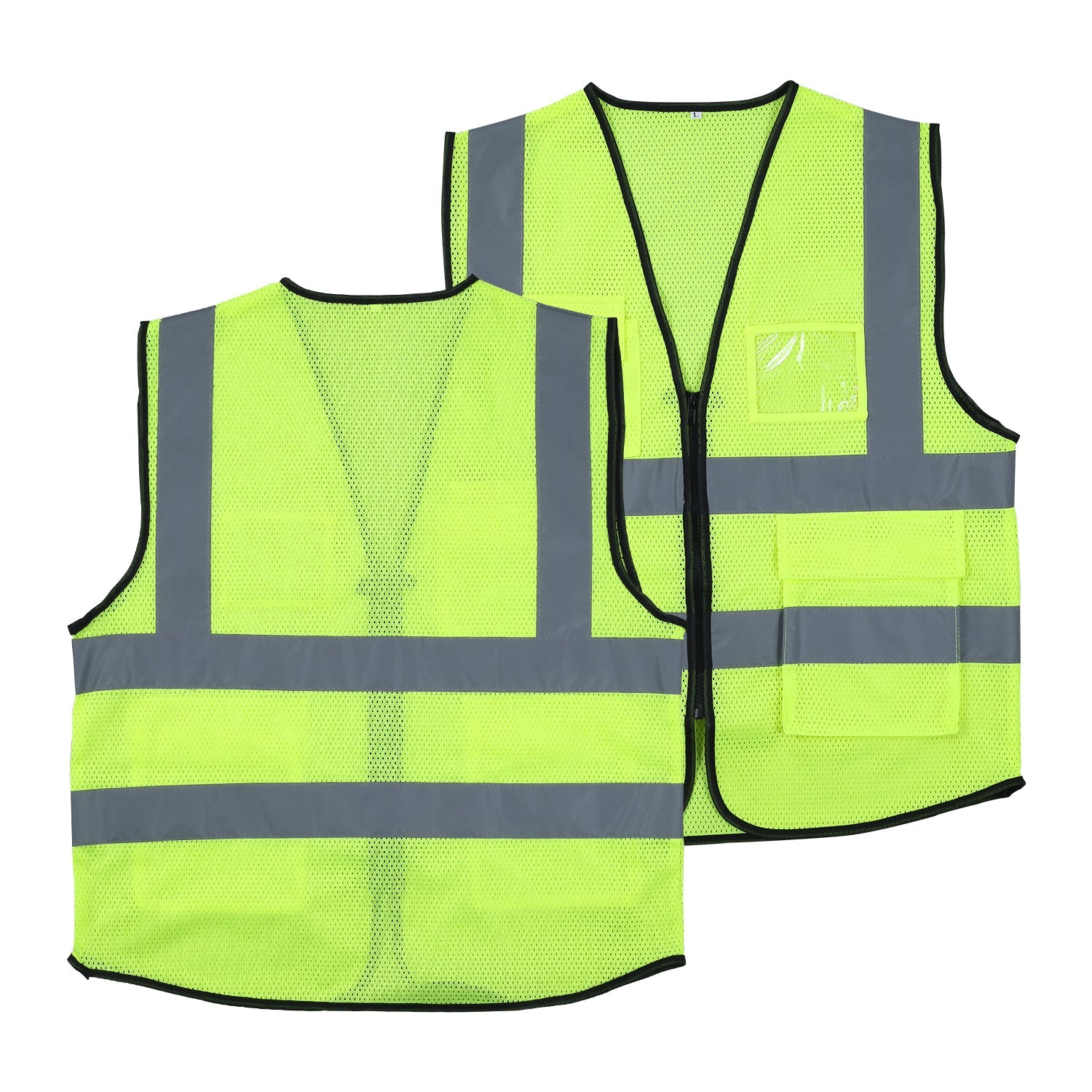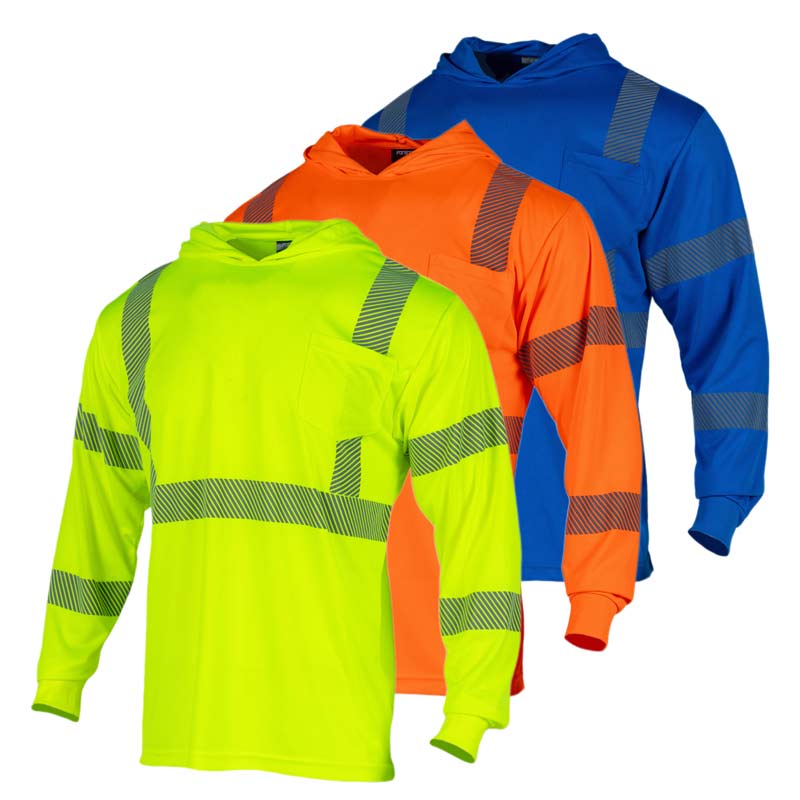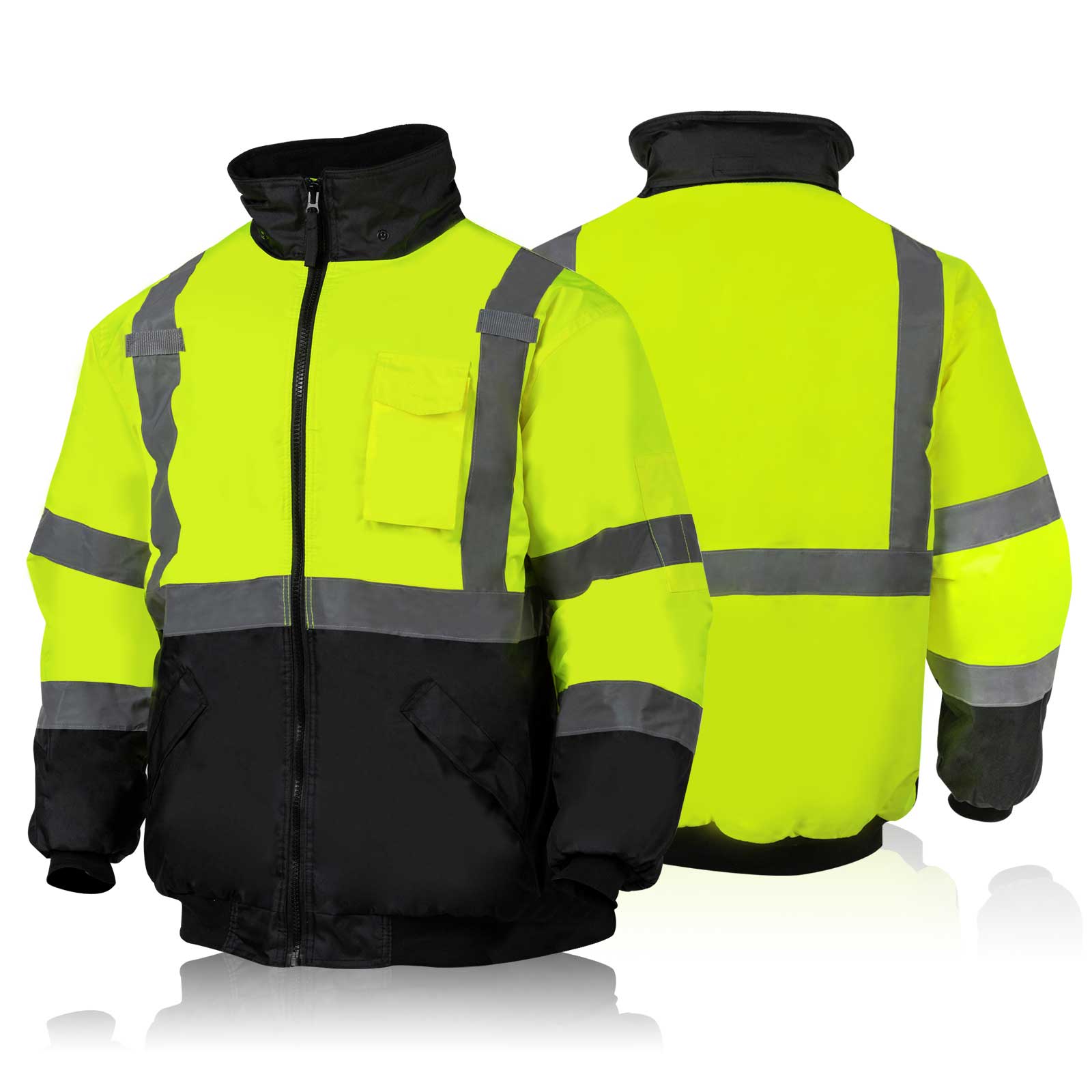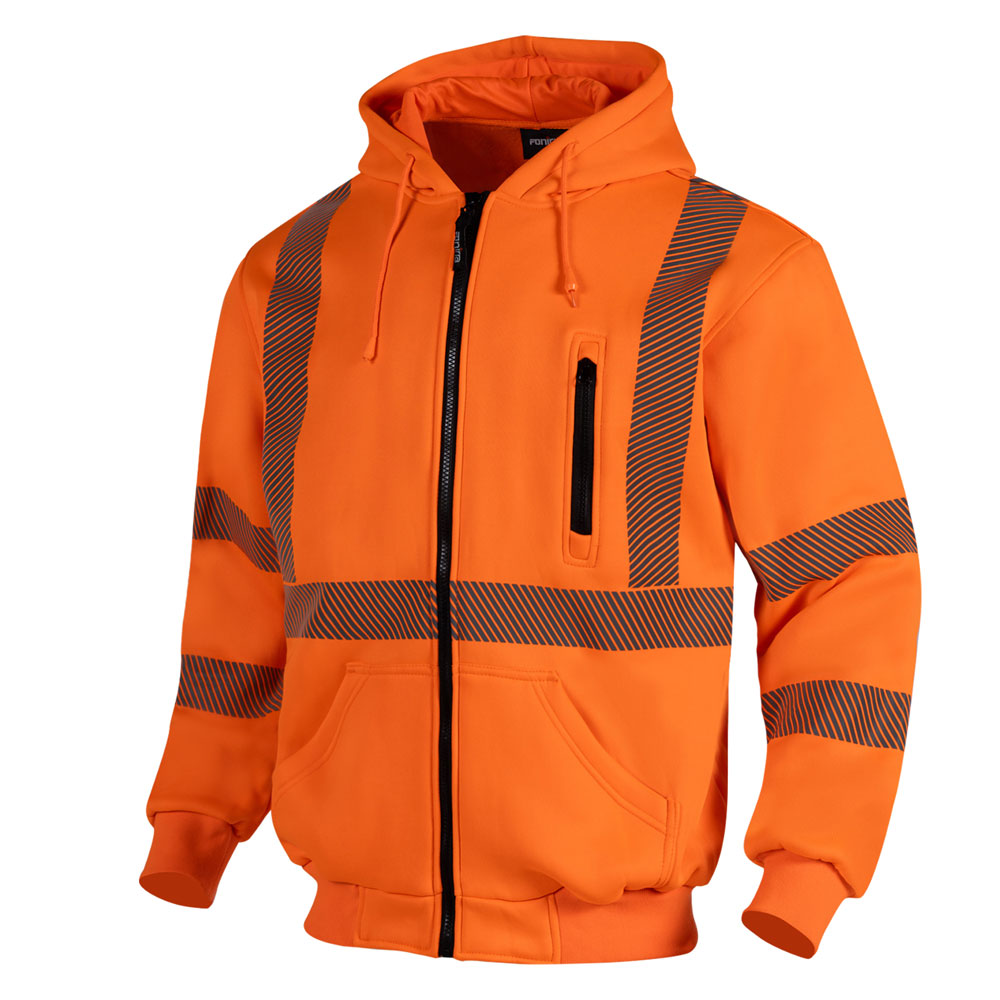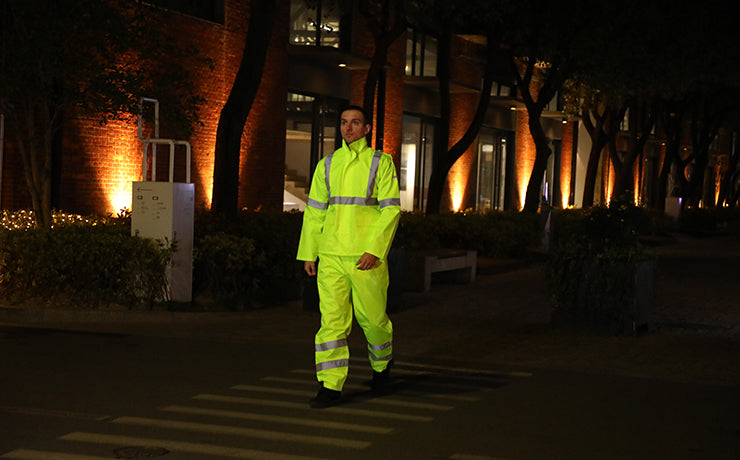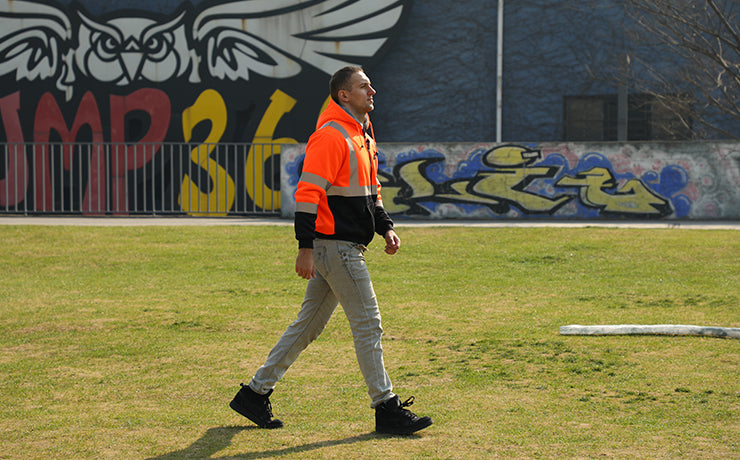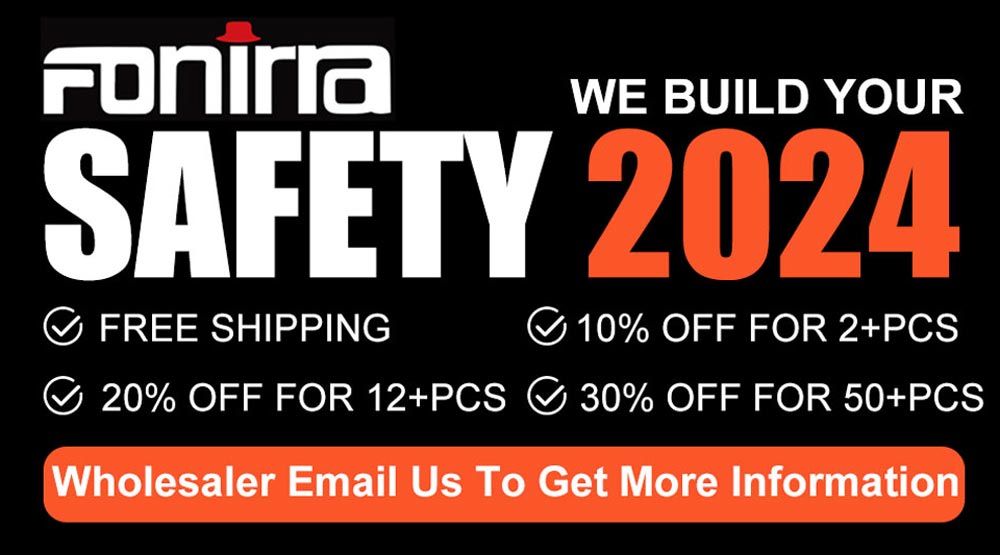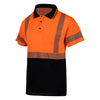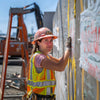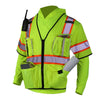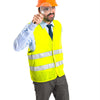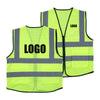11 Things A Safety Supervisor Need to Look Out For (Checklist)
Safety supervisors in the construction industry are the unsung heroes who often walk a fine line. Their role – to ensure safety standards are maintained, and chances of workplace accidents are minimized – is of paramount importance.
With their skilled eyes, they scrutinize every corner of a job site, always looking for potential hazards. A significant part of their job involves conducting safety audits/inspections and guaranteeing employees the proper use of safety clothing.
This article provides a detailed safety inspection checklist that safety supervisors can follow to maintain the highest safety standards at their construction sites.
Safety Inspection Checklist
Here's a checklist:
1. Personal Protective Equipment (PPE)

Inspecting PPE involves:
-
Assessing Condition: Inspect the overall condition of the PPE. Look for any wear and tear, which might compromise its effectiveness.
-
Checking Correct Use: Ensure that workers use the PPE correctly and that it fits them well.
-
Ensuring Availability: Verify that adequate PPE is available for all workers on the job site.
2. Equipment and Machinery

Equipment, motor vehicles, and machinery are vital components of any construction site. It also includes motor vehicle safety inspection, mostly for only a commercial vehicle. However, they can pose significant safety risks if not properly maintained or used.
When inspecting equipment and machinery, consider the following:
-
Maintenance Checks: Ensure all machinery and equipment are regularly serviced and maintained.
-
Operator Training: Check that all machine operators have received adequate training.
-
Safety Features: Confirm that all safety features, such as emergency shut-off switches, are functional.
3. Scaffolding

Scaffolding provides workers access to high places and supports them while working. The safety manager must ensure through safety inspections that scaffolding is robust, secure, and correctly assembled.
During a scaffolding inspection, be sure to:
-
Inspect Assembly: Check the scaffolding assembly for stability, proper securing, and correct parts use.
-
Look for Damage: Look for any signs of damage or wear that could make the scaffolding unsafe.
-
Ensure Proper Use: Ensure workers use the scaffolding correctly and follow all safety guidelines.
4. Ladders and Stairways

Ladders and stairways provide access to different areas of the construction site. They need to be secure and in good condition to prevent falls.
Here are the points to inspect:
-
Condition Check: Look for any damage or wear on ladders and stairways.
-
Safety Features: Confirm that safety features, such as handrails and non-slip surfaces, are in place and in good condition.
-
Correct Use: Check that workers use ladders and stairways safely, following all relevant safety guidelines. This includes to shielding from live wires, which brings us to:
5. Electrical Safety

Electricity is a potential danger on any construction site. Ensuring electrical safety is crucial to prevent shocks, fires, and other hazards.
When conducting an electrical safety inspection, look out for the following:
-
Proper Wiring: Check that all wiring is secure, properly insulated, and free of damage.
-
Lockout/Tagout Procedures: Ensure all equipment is properly shut off and locked out when serviced.
-
Grounding: Confirm that all electrical systems are properly grounded to prevent shocks.
6. Trenches and Excavations

Trenches and excavations can present a risk of collapse, which can be lethal to workers inside. They must be properly shored and secure.
Points to check during an inspection include:
-
Proper Shoring: Verify that trenches and excavations are properly shored to prevent collapse.
-
Safe Access: Check for safe access in and out of the trench or excavation.
-
Inspection Records: Ensure regular inspection records are maintained for all trenches and excavations.
7. Fall Protection

Fall protection measures are necessary to prevent workers from falling from heights, one of the most common causes of serious injury in the construction industry.
During an inspection, look for the following:
-
Proper Equipment: Check that fall protection equipment, such as harnesses and safety nets, are available and in good condition.
-
Safety Procedures: Ensure workers follow safety procedures when working at heights.
-
Risk Assessment: Confirm that a risk assessment has been carried out for all work at height.
8. Hazard Communication
 Hazard communication is about ensuring that workers know the potential hazards they may encounter on the job site.
Hazard communication is about ensuring that workers know the potential hazards they may encounter on the job site.
During an inspection, be sure to check the following:
-
Visible Signage: Check that hazard signs are visible and in the appropriate places.
-
Hazardous Substances: Ensure that all hazardous substances are correctly labeled and stored.
-
Training Records: Verify that workers have received training in hazard communication.
9. Fire Prevention and Protection

Fire prevention and protection practices are crucial to minimize the fire risk and ensure workers' safety if a fire occurs.
When inspecting fire safety measures, consider the following:
-
Fire Extinguishers: Check that fire extinguishers are easily accessible properly maintained and that workers know how to use them.
-
Fire Risks: Identify potential fire risks and ensure they are adequately managed.
-
Emergency Routes: Confirm that fire escapes and routes are clear and easily accessible.
10. First Aid and Emergency Preparedness

First aid and emergency preparedness are crucial to any operation to ensure that injuries or incidents can be dealt with quickly and effectively.
During an inspection, look out for:
-
First Aid Kits: Ensure that kits are fully stocked and easily accessible.
-
Emergency Plans: Check that they are in place and that workers are aware of them.
-
First Aid Training: Confirm that there are on-site workers who have been trained in first aid.
11. Safety Clothing

Safety clothing, also known as personal protective clothing, is a barrier between workers and potential hazards on a construction site.
This might include high-visibility vests, steel-toe boots, gloves, protective eyewear, and hard hats, each designed to protect specific body parts.
During a safety clothing inspection, you should:
-
Condition Checks: Ensure all safety clothing items are in good condition, free of excessive wear or damage, and offer the level of protection intended.
-
Correct Use: Verify that workers wear appropriate safety clothing for their specific tasks and that these items fit correctly to provide maximum protection.
-
Availability: Confirm a sufficient supply of safety clothing for all workers on site and that items are readily available when needed.
-
Training: Check that workers have received proper training on using and maintaining safety clothing.
Conclusion

Remember, a safety supervisor's role is to identify and rectify potential safety issues and foster a safety culture.
Regular inspections, continuous safety education, compliance with safety regulations and the correct use of safety clothing are fundamental to achieving a safe construction site. Safety meetings should also be held in recurring intervals.
We hope this article has helped. Thanks for reading!

